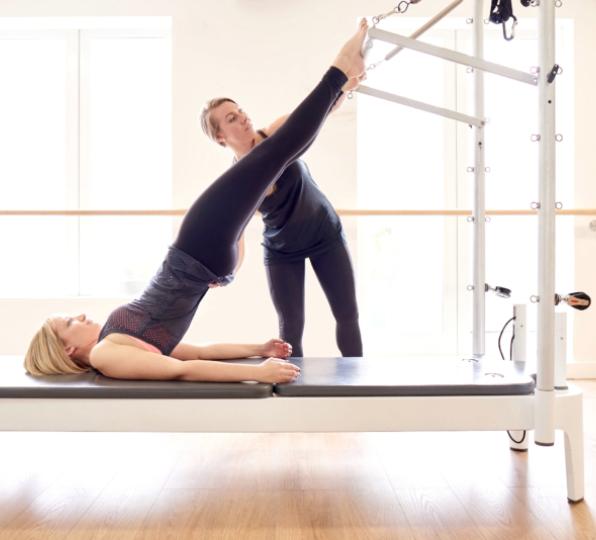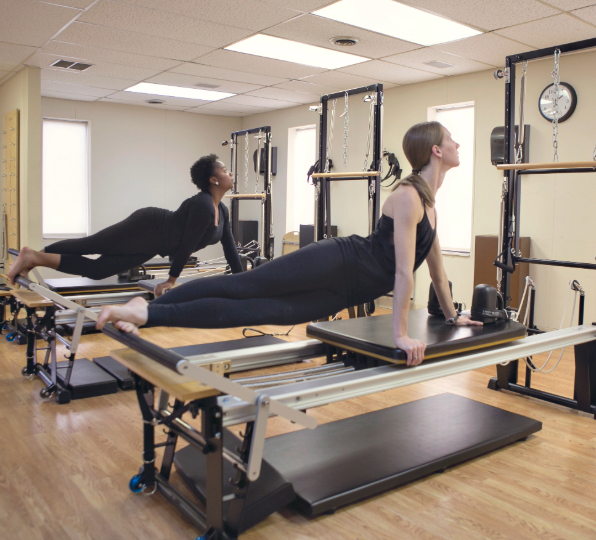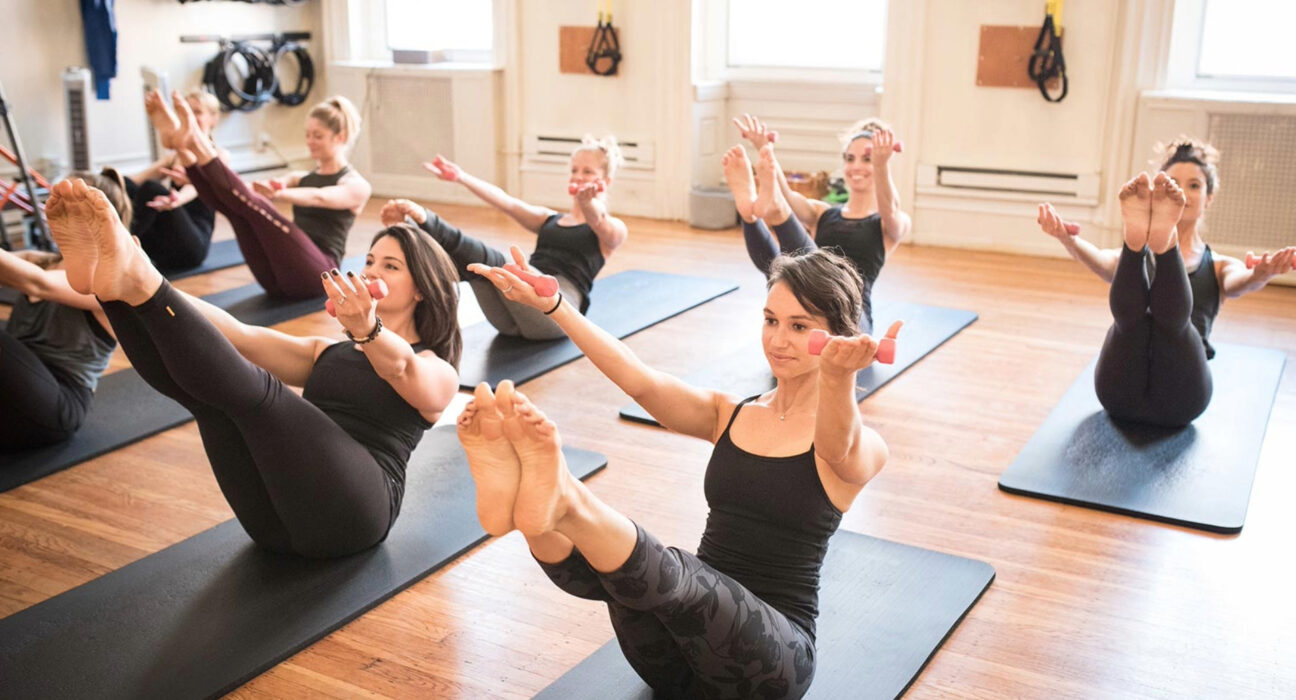Introduction:
Pilates is a well-known exercise program that has become well-known all over the world for its all-encompassing approach to physical health. Joseph Pilates created this technique in the early 20th century, and it uses controlled movements to emphasize strength, flexibility, and coordination. We’ll go over the definition of Pilates, its tenets, advantages, and ways to incorporate it into your exercise regimen for a more balanced, healthful lifestyle in this blog post.
1. Understanding Pilates
Pilates has emerged as a popular exercise method renowned for its ability to strengthen the body, improve flexibility, and promote overall well-being. Developed by Joseph Pilates in the early 20th century, Pilates is a low-impact fitness regimen that emphasizes core strength, flexibility, and proper body alignment. It draws inspiration from various disciplines, including strength training, yoga, and ballet, to create a holistic approach to physical fitness.
At the core of Pilates is the principle of core engagement, which involves activating the deep abdominal muscles, pelvic floor muscles, and muscles surrounding the spine. By strengthening these core muscles, Pilates aims to improve stability, balance, and overall body control. The focus on core strength sets Pilates apart from other forms of exercise and forms the foundation for all movements within the practice.
Pilates exercises are typically performed on a mat or specialized equipment designed to facilitate resistance and support. The most commonly used Pilates equipment includes the reformer, Cadillac, and chair, each offering unique benefits and variations to accommodate different fitness levels and goals. The reformer, for example, features a sliding carriage, springs, and straps that provide resistance and assistance, allowing for a wide range of exercises targeting various muscle groups.
One of the key principles of Pilates is precision and control. Movements are performed with a deliberate and mindful approach, focusing on proper alignment, breath control, and fluidity of motion. By emphasizing quality over quantity, Pilates promotes awareness of movement patterns, encourages mindfulness, and reduces the risk of injury.
Another hallmark of Pilates is its emphasis on flexibility and mobility. Pilates exercises often involve stretching and lengthening muscles, promoting increased range of motion and joint flexibility. This focus on flexibility complements the strength-building aspect of Pilates, creating a balanced and functional approach to fitness.
Furthermore, Pilates is known for its ability to improve posture and body alignment. Through targeted exercises that engage the core muscles and promote spinal stability, Pilates helps correct imbalances, alleviate muscle tension, and foster a more upright and aligned posture. Improved posture not only enhances physical appearance but also reduces the risk of injury and promotes optimal movement efficiency.
In addition to its physical benefits, Pilates offers mental and emotional benefits as well. The mindful nature of Pilates promotes relaxation, stress reduction, and mental clarity, making it an effective tool for managing anxiety and promoting overall well-being.
2. The Principles of Pilates
Joseph Pilates outlined six key principles that form the foundation of the Pilates method:
- Concentration: Focusing the mind on each movement with precision and awareness.
- Control: Performing exercises with smooth, controlled movements to maintain proper form and alignment.
- Centering: Engaging the core muscles, also known as the “powerhouse,” to initiate and support movement.
- Precision: Executing movements with accuracy and attention to detail for optimal results.
- Breath: Integrating rhythmic breathing to facilitate movement and promote relaxation.
- Flow: Transitioning seamlessly between exercises to create a continuous, flowing sequence.
3.Benefits of Pilates
Pilates offers a myriad of benefits for both the body and mind, including:
- Improved core strength and stability
- Increased flexibility and mobility
- Enhanced posture and alignment
- Reduced risk of injury
- Better balance and coordination
- Stress relief and relaxation
- Heightened body awareness and mindfulness
4.Who Can Benefit from Pilates?
Pilates is a versatile and inclusive form of exercise that offers a wide range of benefits for individuals of all ages, fitness levels, and backgrounds. Whether you’re a beginner looking to improve your overall fitness, an athlete seeking to enhance performance, a pregnant woman preparing for childbirth, a senior aiming to maintain mobility and independence, or someone recovering from injury, Pilates can be adapted to meet your specific needs and goals.
For beginners, Pilates provides a gentle introduction to exercise, focusing on fundamental movement patterns and core strength. The emphasis on proper alignment, breath control, and mindful movement makes Pilates accessible to individuals who may be new to fitness or recovering from a sedentary lifestyle. By gradually building strength, flexibility, and body awareness, beginners can develop a solid foundation for long-term health and wellness.
Athletes and fitness enthusiasts can benefit from Pilates as a complement to their existing training regimen. Pilates helps improve core strength, stability, and neuromuscular coordination, enhancing athletic performance and reducing the risk of injury. Many professional athletes incorporate Pilates into their training routines to improve flexibility, balance, and overall body control, leading to better results on the field, court, or track.
Pregnant women can safely practice Pilates throughout pregnancy to maintain strength, flexibility, and pelvic stability. Modified Pilates exercises can help alleviate common pregnancy-related discomforts, such as back pain, pelvic girdle pain, and postural changes. By strengthening the deep abdominal and pelvic floor muscles, Pilates can also aid in labor and delivery, promoting a smoother recovery postpartum.
Seniors can benefit from Pilates as a gentle yet effective form of exercise that promotes mobility, balance, and independence. Pilates exercises can be modified to accommodate age-related changes in flexibility, strength, and joint mobility, making it a safe and accessible option for older adults. Regular Pilates practice can help seniors maintain functional fitness, reduce the risk of falls, and improve overall quality of life as they age.
Individuals recovering from injuries, surgeries, or chronic health conditions can use Pilates as part of their rehabilitation program to regain strength, flexibility, and range of motion. Pilates exercises can be tailored to address specific areas of weakness or imbalance, helping to restore optimal movement patterns and reduce pain. The low-impact nature of Pilates makes it suitable for individuals recovering from orthopedic injuries, spine conditions, or neurological disorders.
5.Incorporating Pilates Into Your Fitness Routine
Incorporating Pilates into your fitness routine offers a myriad of options to suit your preferences, goals, and lifestyle. Whether you prefer the camaraderie of group classes, the personalized attention of private sessions, or the convenience of at-home workouts, Pilates can be adapted to meet your needs and preferences. Furthermore, you can choose between mat-based Pilates, which requires minimal equipment and can be done anywhere, or equipment-based Pilates utilizing specialized apparatus for added resistance and assistance.
Group classes provide a dynamic and social environment for practicing Pilates with others who share similar fitness goals. These classes are typically led by certified Pilates instructors who guide participants through a series of exercises designed to improve core strength, flexibility, and overall body awareness. Group classes may vary in intensity and focus, ranging from beginner-level classes focused on foundational movements to advanced classes incorporating challenging exercises and equipment.
Private sessions offer personalized instruction tailored to your individual needs and goals. During private sessions, a certified Pilates instructor works one-on-one with you to develop a customized workout program based on your fitness level, abilities, and any specific concerns or limitations. Private sessions provide an opportunity for targeted instruction, feedback, and modifications to ensure proper form and technique, maximizing the benefits of your Pilates practice.
At-home workouts offer flexibility and convenience for incorporating Pilates into your daily routine. With a variety of online resources, including instructional videos, streaming classes, and mobile apps, you can access Pilates workouts anytime, anywhere. Mat-based Pilates requires minimal equipment, making it accessible for home practice. You can follow along with guided workouts or create your own routine based on your preferences and fitness goals. Additionally, equipment-based Pilates can be adapted for home use with portable apparatus such as resistance bands, stability balls, and Pilates rings.
Mat-based Pilates focuses on bodyweight exercises performed on a mat, utilizing gravity and resistance to challenge core strength, stability, and flexibility. These exercises often incorporate movements inspired by yoga, dance, and traditional Pilates repertoire, such as the hundred, roll-up, and leg circles. Mat-based Pilates is accessible for beginners and can be modified to accommodate different fitness levels and abilities.
Equipment-based Pilates utilizes specialized apparatus, such as the reformer, Cadillac, chair, and barrel, to provide added resistance and assistance for a more challenging and dynamic workout. These apparatus offer a wide range of exercises targeting specific muscle groups and movement patterns, allowing for endless variations and progressions. Equipment-based Pilates provides opportunities for functional resistance training, proprioceptive feedback, and neuromuscular conditioning, enhancing overall strength, flexibility, and body awareness.
6. Incorporating Pilates Into Your Fitness Routine
Incorporating Pilates into your fitness routine offers a multitude of options to suit your preferences and lifestyle. Whether you thrive in group settings, prefer the individualized attention of private sessions, or enjoy the convenience of working out at home, Pilates can be tailored to meet your needs. Additionally, you can opt for mat-based Pilates, which necessitates minimal equipment and can be practiced virtually anywhere, or equipment-based Pilates that employs specialized apparatus to enhance resistance and support.
Group classes provide a supportive and motivating environment for practicing Pilates alongside others with similar fitness aspirations. Led by certified instructors, group classes typically encompass a variety of exercises targeting core strength, flexibility, and body awareness. These classes range in intensity and complexity, accommodating participants of all skill levels, from beginners to advanced practitioners. The camaraderie and energy of group classes can inspire and challenge you to reach new heights in your Pilates practice.
For those seeking personalized guidance and attention, private sessions offer a tailored approach to Pilates instruction. During one-on-one sessions with a certified instructor, you’ll receive individualized feedback, corrections, and modifications to address your unique needs and goals. Private sessions allow for focused attention on specific areas of improvement, ensuring proper form and technique while maximizing the effectiveness of your workouts. Whether you’re recovering from an injury, working towards a specific fitness goal, or simply prefer a more personalized experience, private sessions offer unparalleled support and guidance.
At-home workouts provide flexibility and convenience for integrating Pilates into your daily routine. With a plethora of online resources, including instructional videos, virtual classes, and mobile apps, you can access Pilates workouts anytime, anywhere. Mat-based Pilates is particularly well-suited for home practice, as it requires minimal equipment and space. You can follow along with guided routines or create your own workouts based on your preferences and fitness level. Additionally, equipment-based Pilates can be adapted for home use with portable apparatus such as resistance bands, stability balls, and Pilates rings, allowing for a challenging and effective workout without the need for specialized equipment.
Mat-based Pilates emphasizes bodyweight exercises performed on a mat, focusing on core strength, flexibility, and stability. These exercises incorporate movements inspired by yoga, dance, and traditional Pilates repertoire, such as the hundred, roll-up, and single leg stretch. Mat-based Pilates is accessible for individuals of all ages and fitness levels, making it an ideal option for beginners and experienced practitioners alike.
Equipment-based Pilates utilizes specialized apparatus, such as the reformer, Cadillac, chair, and barrel, to provide resistance and assistance for a dynamic and engaging workout. These apparatus offer a wide range of exercises targeting specific muscle groups and movement patterns, allowing for endless variations and progressions. Equipment-based Pilates challenges the body in new ways, promoting strength, coordination, and proprioception while enhancing overall body awareness and control.


Conclusion:
While the relationship between alcohol and anxiety is complex, understanding the physiological and psychological factors at play can empower individuals to make informed choices. By adopting mindful drinking habits and incorporating self-care practices, one can enjoy socializing without succumbing to post-drinking anxiety. Remember, moderation and self-awareness are key to maintaining a healthy balance.












